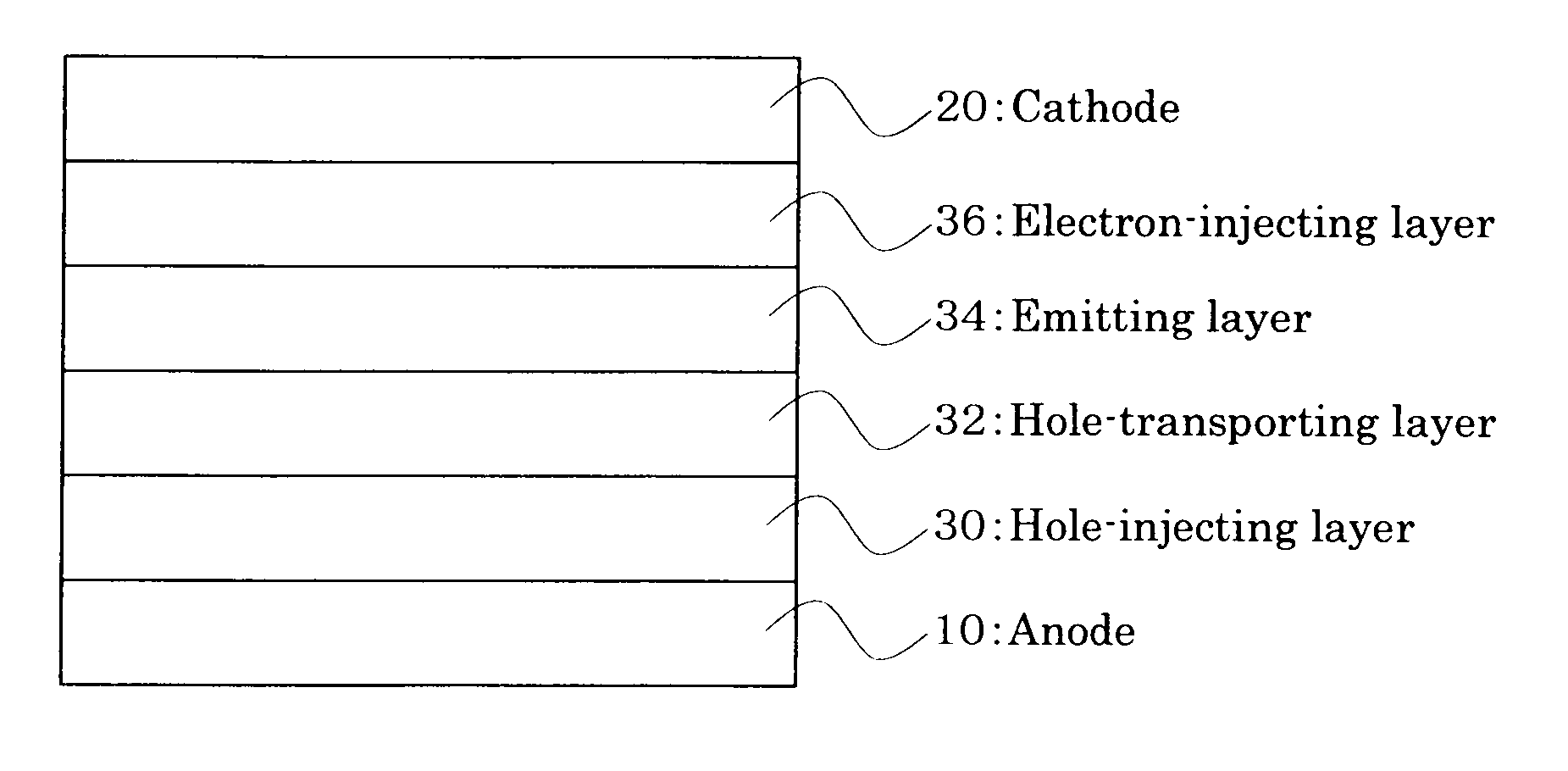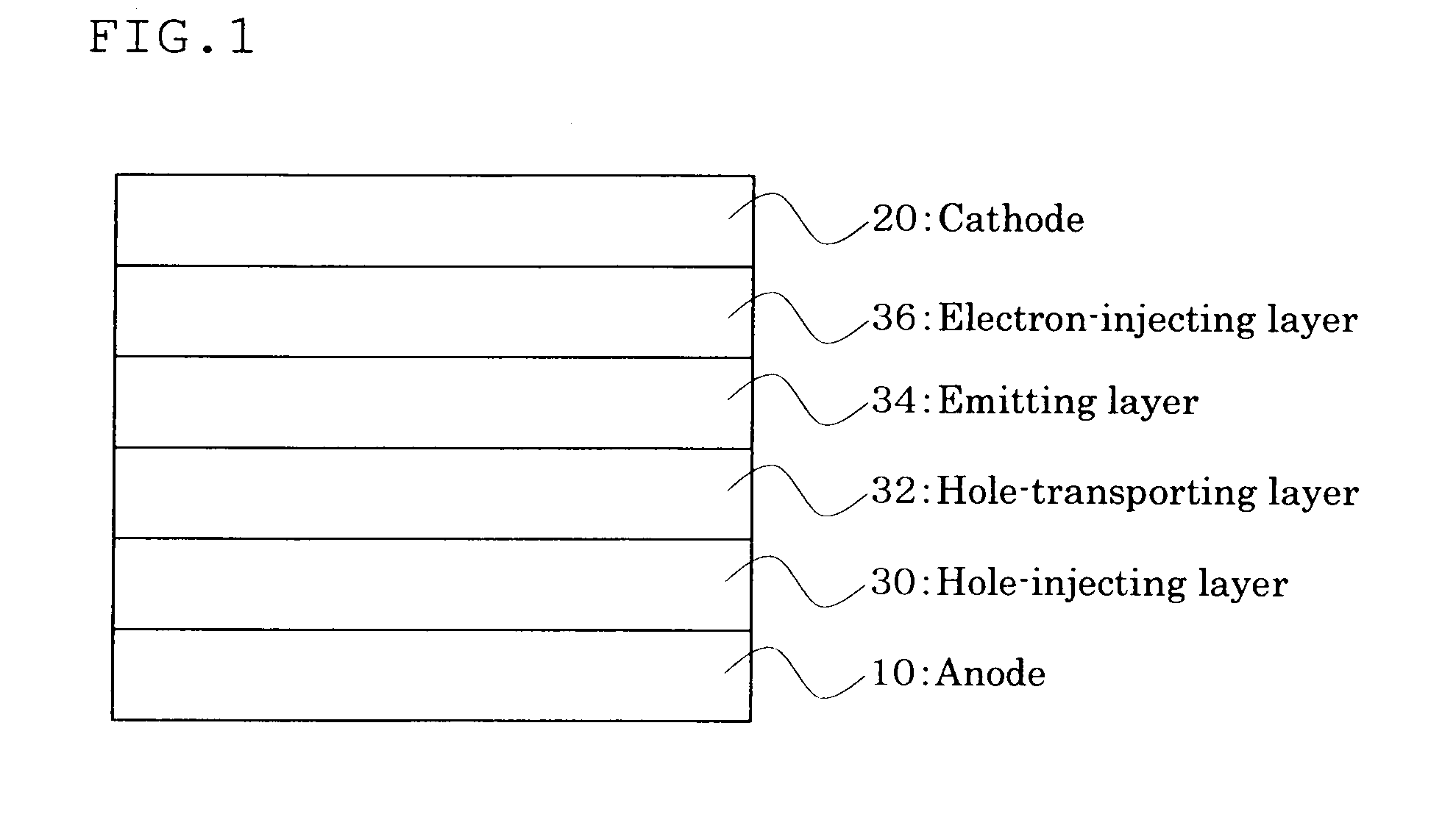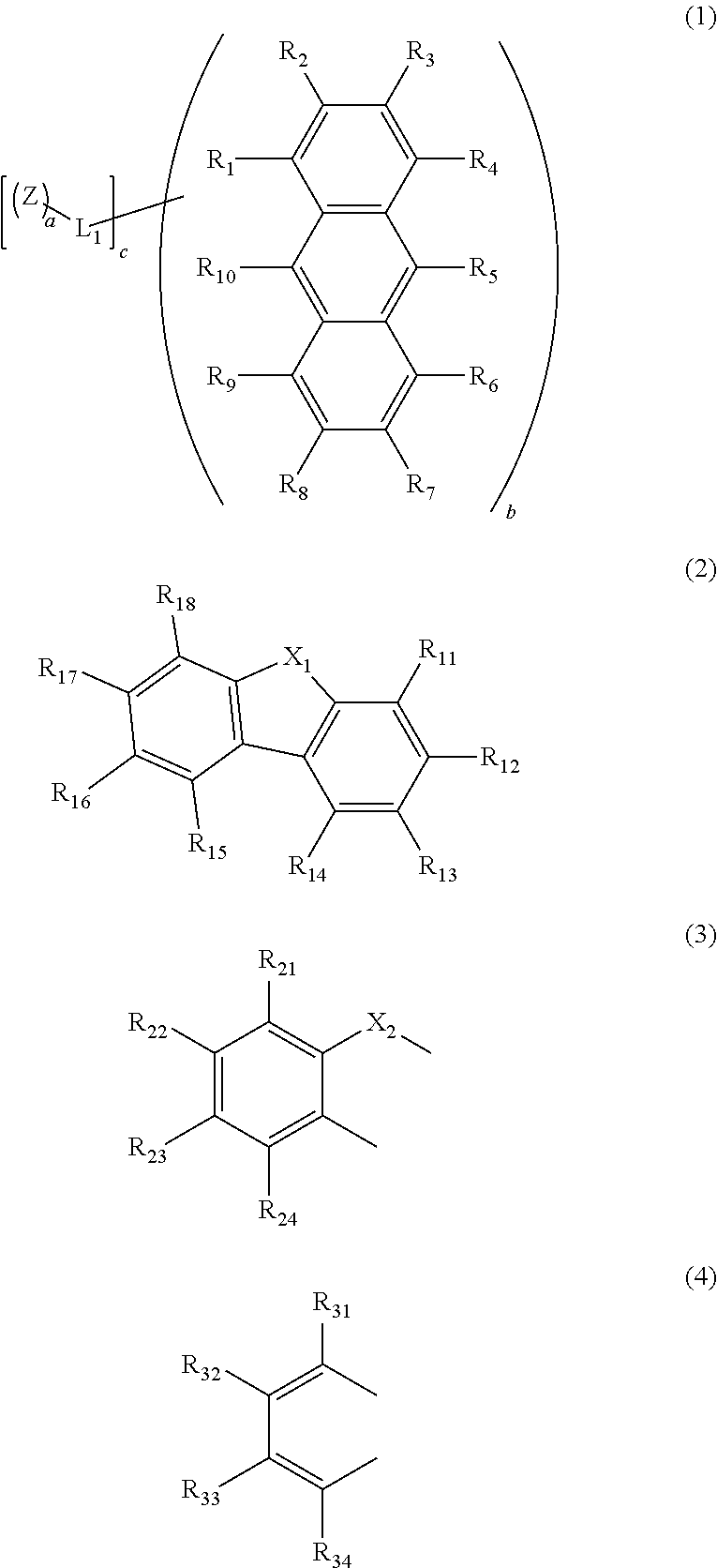Anthracene derivative and organic electroluminescent element using the same
an anthracene derivative and organic electroluminescence technology, applied in the direction of luminescent compositions, organic chemistry, chemistry apparatus and processes, etc., can solve the problems of low luminance or luminous efficiency of organic el devices, their properties tend to deteriorate significantly, and conventional organic el devices have not been put in a practical use, so as to prevent luminance or luminous efficiency improvement, luminance or luminous efficiency may be improved
- Summary
- Abstract
- Description
- Claims
- Application Information
AI Technical Summary
Benefits of technology
Problems solved by technology
Method used
Image
Examples
production example
(A) Synthesis of Intermediate (A)
[0150]
(A-1) Synthesis of 1-bromo-2,6-dimethoxybenzene
[0151]In the atmosphere of argon, 19.3 g of 1,3-dimethoxybenzene and 500 mL of anhydrous diethyl ether were placed in a flask. 105 mL (1.6M) of a hexane solution of n-butyllithium was added, and the resulting reaction solution was stirred with heating for 4 hours. After cooling to room temperature while stirring, the reaction solution was cooled to −50° C., followed by dropwise addition of 25 g of bromine. Then, while heating the reaction solution to room temperature, stirring was conducted for 2 hours. Then, 300 mL of an aqueous 10% sodium thiosulfate solution was added, and the resulting mixture was stirred for 1 hour. The reaction solution was extracted with ether, and an aqueous phase was removed, and then, an organic phase was washed with saturated saline. The organic phase was dried with magnesium sulfate and concentrated. Residues were purified by means of silica gel column chromatography. T...
example 1
[0208]
[0209]In the atmosphere of argon, 3.84 g of intermediate (B), 3.83 g of 10-(2-naphthyl)anthracene-9-boronic acid which was synthesized by a known method, 0.231 g of tetrakis(triphenylphosphine)palladium (0), 40 mL of 1,2-dimethoxyethane and 20 mL of a 2M aqueous sodium carbonate solution were charged. The resulting mixture was stirred under reflux for 8 hours. After cooling to room temperature, deposited solids were filtered out. The solids thus obtained were washed with water and methanol, recrystallized from toluene, whereby 4.20 g of pale yellow solids of compound 1 were obtained. As a result of mass spectroscopy, it was confirmed that the solids were an intended product having an m / e of 560 relative to the molecular weight of 560.18.
example 2
[0210]
[0211]Compound 2 was obtained in the same manner as in Example 1, except that 10-(1-naphthyl)anthracene-9-boronic acid which was synthesized by a known method was used instead of 10-(2-naphthyl)anthracene-9-boronic acid. As a result of mass spectroscopy, it was confirmed that this compound was an intended product having an m / e of 636 relative to the molecular weight of 636.21.
PUM
| Property | Measurement | Unit |
|---|---|---|
| Time | aaaaa | aaaaa |
| Time | aaaaa | aaaaa |
| Time | aaaaa | aaaaa |
Abstract
Description
Claims
Application Information
 Login to View More
Login to View More - R&D
- Intellectual Property
- Life Sciences
- Materials
- Tech Scout
- Unparalleled Data Quality
- Higher Quality Content
- 60% Fewer Hallucinations
Browse by: Latest US Patents, China's latest patents, Technical Efficacy Thesaurus, Application Domain, Technology Topic, Popular Technical Reports.
© 2025 PatSnap. All rights reserved.Legal|Privacy policy|Modern Slavery Act Transparency Statement|Sitemap|About US| Contact US: help@patsnap.com



